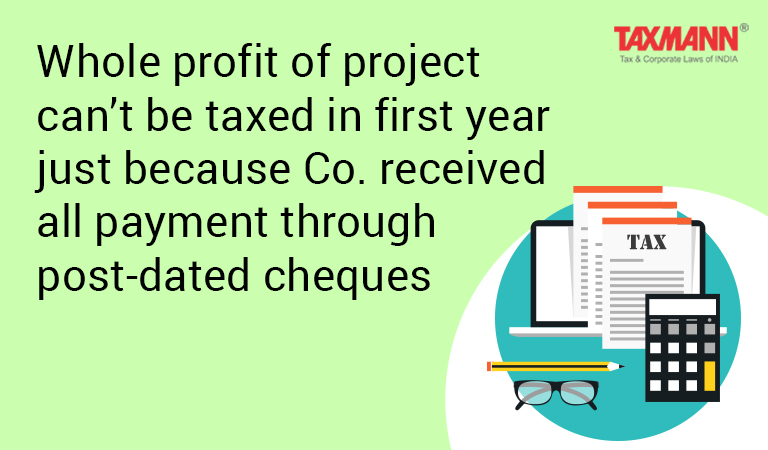Whole profit of project can’t be taxed in first year just because Co. received all payment through post-dated cheques
- Blog|News|Income Tax|
- 2 Min Read
- By Taxmann
- |
- Last Updated on 6 September, 2021
Case Details: Pearl Coschem (P.) Ltd. v. DCIT - [2021] 129 taxmann.com 319 (Mumbai - Trib.)
Judiciary and Counsel Details
-
- Mahavir Singh, Vice President and S. Rifaur Rahman, Accountant Member.
- Vijay Mehta, AR for the Appellant.
- Ms. Shreekala Pardeshi, DR for the Respondent.
Facts of the Case
During the assessment, Assessing Officer (AO) observed that assessee had entered into a Memorandum of Understanding (MoU) with SIPL to invest in the project to be executed by SIPL. It was agreed between them that SIPL will complete the project and help the assessee to market and sell the flats. Accordingly, SIPL issued 18 post-dated cheques to the assessee and in MOU it was agreed that the above said post-dated cheques will be deposited by the assessee without reference to SIPL.
AO made additions relying on the cheque collection clause of the MOU that the post-dated cheques shall be deposited on due dates without reference to SIPL. Aggrieved-assessee preferred an appeal before CIT(A) which was later dismissed. Assessee filed the instant appeal before the Mumbai Tribunal.
ITAT Held
The Mumbai Tribunal has held that the assessee had received the promised amount from SIPL in the current assessment year but considered the same as advance since the project was not completed nor sold any flats current year. Further, it was submitted by the assessee that even in other assessment years also assessee had received certain payments as per the MOU but not received the whole payment on the promised date. Even the project was not completed.
AO had proceeded to make the addition of whole expected profit in current AY based on the promised payment schedule since the assessee is a company and expected to follow the mercantile system of accounting.
It was found that the project was not completed in the current assessment year, and promised payments against this project are part of the total agreed sales proceeds when the project shall be completed. Thus, AO wasn’t justified in bringing the whole profit of the project in the first year of execution of the MOU.
Disclaimer: The content/information published on the website is only for general information of the user and shall not be construed as legal advice. While the Taxmann has exercised reasonable efforts to ensure the veracity of information/content published, Taxmann shall be under no liability in any manner whatsoever for incorrect information, if any.

Taxmann Publications has a dedicated in-house Research & Editorial Team. This team consists of a team of Chartered Accountants, Company Secretaries, and Lawyers. This team works under the guidance and supervision of editor-in-chief Mr Rakesh Bhargava.
The Research and Editorial Team is responsible for developing reliable and accurate content for the readers. The team follows the six-sigma approach to achieve the benchmark of zero error in its publications and research platforms. The team ensures that the following publication guidelines are thoroughly followed while developing the content:
- The statutory material is obtained only from the authorized and reliable sources
- All the latest developments in the judicial and legislative fields are covered
- Prepare the analytical write-ups on current, controversial, and important issues to help the readers to understand the concept and its implications
- Every content published by Taxmann is complete, accurate and lucid
- All evidence-based statements are supported with proper reference to Section, Circular No., Notification No. or citations
- The golden rules of grammar, style and consistency are thoroughly followed
- Font and size that’s easy to read and remain consistent across all imprint and digital publications are applied








 CA | CS | CMA
CA | CS | CMA


